Siberian tiger
Siberian tiger
Publié par le Saturday 2 March 2019

The largest of the felines, with males weighing up to 350 kg. This big cat was one of the first to be managed by a breeding program in Europe in 1985. A great walker, the Siberian tiger can cover up to 150km in search of food. It is the most emblematic of all felines. Although its wild population is on the increase thanks to the joint efforts of zoos and NGOs preserving it in the wild, it is still very much under threat…
Retour au blog Partager : Facebook Twitter
Malayan tiger
Publié par le Saturday 2 March 2019

The Malayan tiger is the 9th subspecies of tiger, and unfortunately also features on the all-too-long list of endangered felines. Larger than its Sumatran cousin, it is just as threatened by the deforestation of its natural habitat by human activities. In our park, they have a small forest of 3.5 hectares! Will you be observant enough to find them?
Retour au blog Partager : Facebook Twitter
Clouded panther
Publié par le Saturday 2 March 2019

The clouded panther is a nocturnal feline that is little studied in the wild, but is one of the most endangered felines today, mainly because of its unique coat. Arboreal, the clouded leopard is the only one, along with the margay, capable of descending from trees headfirst. It has very long fangs in proportion to the size of its skull, making it an intermediary between modern felines and primitive lines of saber-toothed felines.
Retour au blog Partager : Facebook Twitter
Sri Lankan leopard
Publié par le Saturday 2 March 2019

With its short, orangey-yellow coat, this panther is undoubtedly one of the most beautiful. Like all the leopards in the park, it has a vast tree-lined enclosure. Don’t hesitate to look in the trees if you can’t find them. The Sri-Lanka panther has been the subject of a breeding program since 1996.
Retour au blog Partager : Facebook Twitter
Snow leopard
Publié par le Saturday 2 March 2019

A mythical feline adapted to life at altitude, the snow leopard, also known as the ounce, is one of the most majestic of all felines. Difficult to observe in the wild, fewer than 5,000 remain in the wild today. Its magnificent, thick coat makes it a prime target for fur traffickers… The snow leopard has been the subject of a European breeding program since 1987.
Retour au blog Partager : Facebook Twitter
Amur leopard
Publié par le Saturday 2 March 2019

This is one of the most endangered panther subspecies. With a light yellow coat and long hair up to 10 cm long in winter, this feline is perfectly adapted to the harsh climate of eastern Siberia. Although the population is increasing today thanks to conservation efforts, the Amur panther came close to extinction, with a population of less than 40 individuals in 2004… This subspecies has been the subject of a breeding program since 1993, and a reintroduction program is currently being studied in Russia…
Retour au blog Partager : Facebook Twitter
Siberian lynx
Publié par le Tuesday 26 February 2019

The classification of the various lynx subspecies is likely to change again in the years to come. Present from western Europe to the far east of Siberia, this lynx can only be considered non-endangered. At Lumigny Safari Réserve, 3 of the world’s 4 lynx species are present, with 2 Eurasian lynx subspecies represented.
Retour au blog Partager : Facebook Twitter
Asiatic lion
Publié par le Tuesday 26 February 2019

With a less dense mane, thicker coat and larger caudal tuft, the Asiatic lion is less well known than its African cousin. Living in a forest environment, the territory of one male partially overlaps that of several small groups of females… a far cry from the harem of African lions.
Lumigny Safari Réserve is the only European zoo to house both Asiatic and African lions. A fine mark of recognition for the seriousness of our work… The Asiatic lion has been monitored as part of a European breeding program since 1994.
Retour au blog Partager : Facebook Twitter
Rusty spotted cat
Publié par le Tuesday 26 February 2019

This is the world’s smallest cat. Also known as the red cat, it gets its name from the rusty patches on its flanks. Nocturnal, it is almost impossible to observe in the wild. Fortunately, here at the park, observation conditions are much simpler. And if you still can’t find them, our guides are sure to be able to help! The ruby cat has been the subject of an European breeding program since 1994.
Retour au blog Partager : Facebook Twitter
Fishing cat
Publié par le Friday 22 February 2019

Who says felines don’t like water? Quite the contrary… The fishing cat is a fine example of adaptation to life in wetlands. Able to swim at depths of 1 metre, it has a short, broad tail used as a rudder and a rostrum-shaped mouth, enabling it to easily catch its prey in the water.
Increasingly common in European zoos, the fishing cat is under increasing threat in the wild, not least because of the draining of wetlands by man in South-East Asia.
Retour au blog Partager : Facebook Twitter
Bengal leopard cat
Publié par le Friday 22 February 2019
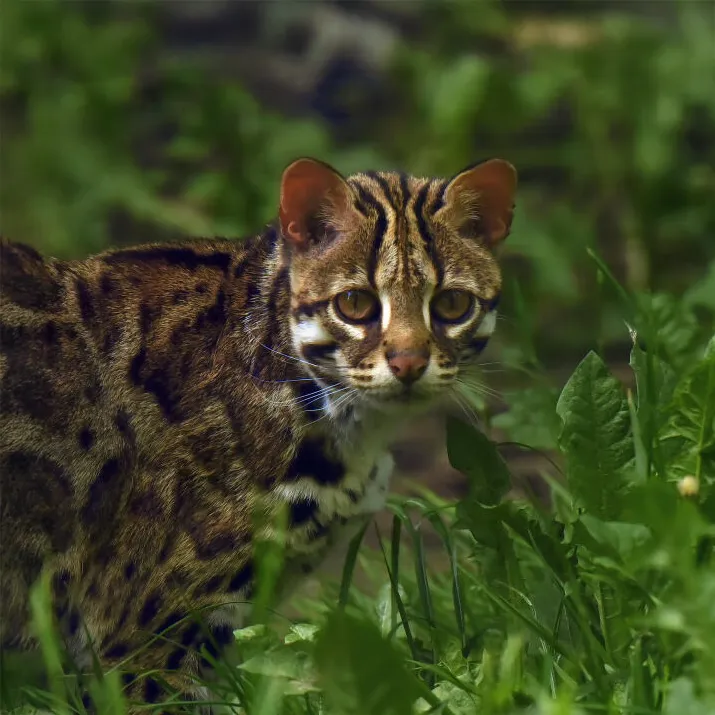
The Bengal leopard cat is a sub-species of the leopard cat that is, on the whole, not very endangered in the wild. Yet in recent years, a new trend has emerged, that of the “domestic” cat with a wild look… including the Bengal, a hybrid between this wild cat and the domestic cat… The existence of these hybrids has no justification in terms of conservation, especially as the importation of foundation individuals from the wild is likely to endanger certain population nuclei by fuelling animal trafficking…
Retour au blog Partager : Facebook Twitter
Siberian leopard cat
Publié par le Friday 22 February 2019

The Siberian leopard cat, also known as the Amur cat, is a subspecies of leopard cat with a duller coat than its Bengal cousin. It’s thanks to this dull coat, adapted to life in cold regions, that the Siberian leopard cat doesn’t attract the covetousness of hybrid creators.
Its status in the wild is totally unknown. However, while it is not currently considered endangered, poaching for its fur does occur…
Retour au blog Partager : Facebook Twitter
Golden asian malay cat
Publié par le Friday 22 February 2019
Another very rare cat species about which we know far too little… One of the characteristics of this species is the presence of a band of very white fur under the tail, the purpose of which is unknown. No other feline has this physical characteristic, with the exception of its Bornean cousin, the even rarer Bai cat (Catopuma badia)… At present, scientists agree that there are 3 different subspecies, including the Malayan golden cat, which is smaller than the other two and has a flamboyant reddish color…
In captivity, the Malayan golden cat is very rare, with only 12 zoos in the world housing them.
The Asian golden cat has been the subject of a breeding program since 1993.
Retour au blog Partager : Facebook Twitter
Chinese asian golden cat
Publié par le Friday 22 February 2019

A very rare feline about which little is known. Nocturnal, the species comprises 3 subspecies. 2 of these are currently housed in the park.
In captivity, too, the species is very rare, and Lumigny Safari Reserve is one of the few European zoos to have had breeding over the last 10 years.
Retour au blog Partager : Facebook Twitter
Jungle cat
Publié par le Friday 22 February 2019

Here’s another probable ancestor of the domestic cat. Present over a large part of southern Asia as far as the Arabian Peninsula, this feline adapts to a wide variety of habitats. Little studied in captivity or in the wild, it remains an entertaining feline for those who take the time to observe it a little!
Retour au blog Partager : Facebook Twitter
Eurasian lynx
Publié par le Tuesday 19 February 2019
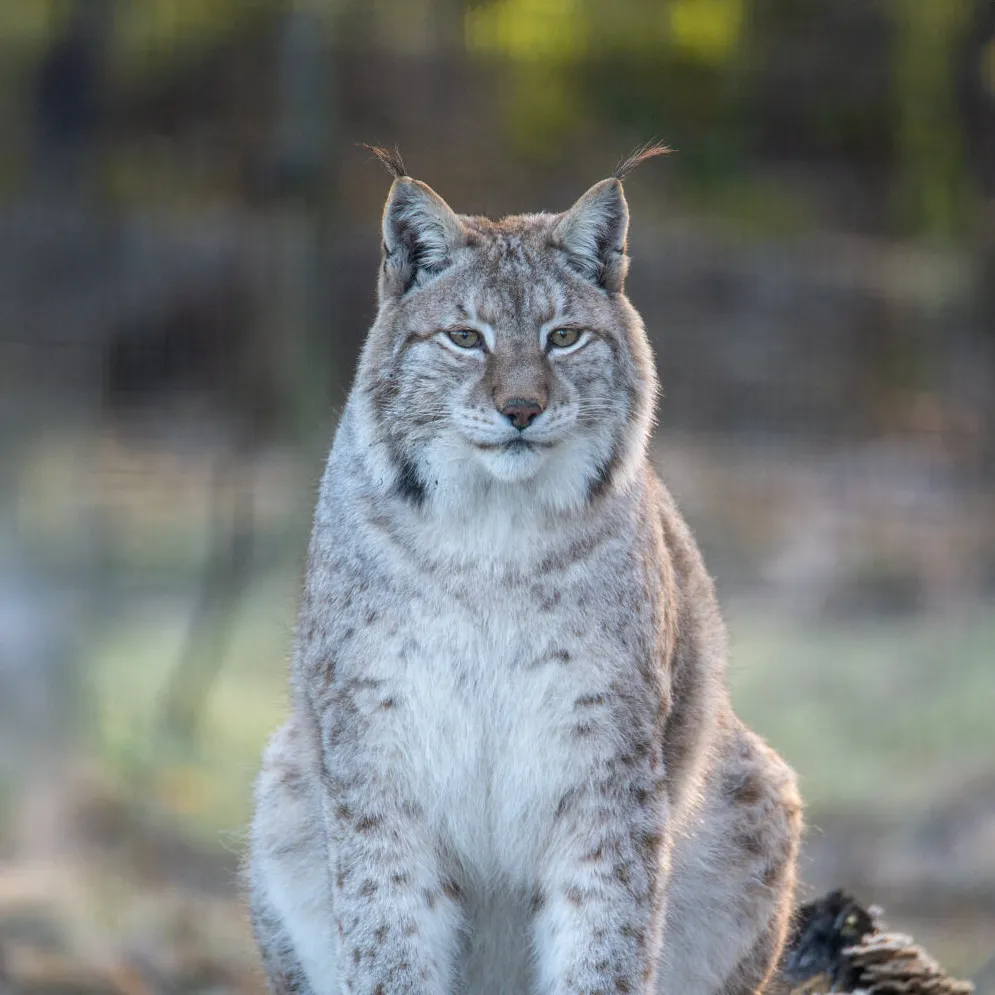
It is the largest living cat in mainland France. Having been exterminated in France in the 1920s, the current population, estimated at between 150 and 200 lynx, is the result of a reintroduction program in the 1970s and the gradual recolonization of eastern France via the black forest massifs.
However, the lynx is finding it difficult to establish itself in certain regions, due to the density of road networks and human activity, as well as an upsurge in poaching.
Retour au blog Partager : Facebook Twitter
European wildcat
Publié par le Tuesday 19 February 2019

Resembling an alley cat, the sylvan cat is nonetheless different from our domestic cat. Indeed, our tomcats and this feline share a common ancestor, but the latter lived a million years ago. Only the African strain of the wild cat was domesticated, a mere 3,500 years ago…
Retour au blog Partager : Facebook Twitter
Puma
Publié par le Tuesday 19 February 2019

It’s the biggest of the cats. In fact, despite its imposing size, the puma belongs to the felinae family. Gifted with a great capacity for adaptation, the puma can be found all over the American continent, from the far north of Canada to southern Patagonia.
Although there is no breeding program, in 2007 Parc des Félins carried out a census of the European population.
Retour au blog Partager : Facebook Twitter
Atlantic Forest tiger cat
Publié par le Tuesday 19 February 2019

Geographically isolated from the populations of northern Brazil 3.7 million years ago, the population of central and southern Brazil has diverged genetically and has recently been classified as a species in its own right. It is one of the smallest felines in America.
Retour au blog Partager : Facebook Twitter
Northern tiger cat
Publié par le Tuesday 19 February 2019

Probably one of the least studied felines in the wild, and one of the smallest. The northern oncilla is found from northern Brazil to Costa Rica. It resembles an intermediate between the margay and Geoffroy’s cat.
Lumigny safari réserve is one of the few establishments in the world to house both species of oncille.
The species has been the subject of a European breeding program since 2004.
Retour au blog Partager : Facebook Twitter
Ocelot
Publié par le Tuesday 19 February 2019
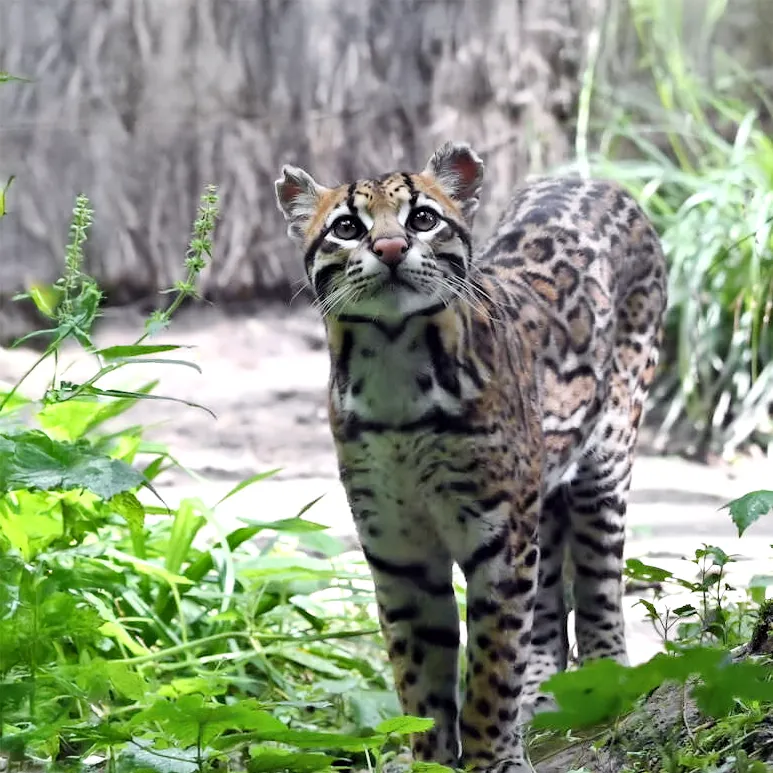
Highly prized for its fur until the mid-1990s, this feline is now better protected but still little studied in the wild. The park’s ocelots benefit from a 2200 m² aviary, one of the largest facilities for this species…
Retour au blog Partager : Facebook Twitter
Margay
Publié par le Tuesday 19 February 2019

This small South American feline will surprise you with its agility if you’re patient and lucky enough to catch a glimpse of it on the move. In fact, this little forest acrobat is capable of descending from trees head downwards, or suspending itself by its hind legs to steal eggs and chicks from nests… The margay has been managed as part of a European breeding program since 1996.
Retour au blog Partager : Facebook Twitter
Bobcat
Publié par le Friday 15 February 2019

Also known as the red lynx, the smallest of the lynxes owes its name to the slightly russet coloring of its hindquarters in winter. Rarely seen in captivity in Europe, in 2007 the Parc des Félins became the first European park to breed this species. Despite its very short tail, the lynx is nonetheless at home in trees… So if you can’t find them on the ground, look up…
Retour au blog Partager : Facebook Twitter
Canada lynx
Publié par le Friday 15 February 2019

The Canada lynx is one of only 4 lynx species in the world. This beautiful animal has hind legs that act like snowshoes in heavy snow. Its coat, similar to that of other lynxes in summer, turns grayish-white in winter. Historically heavily hunted for its fur in the 19th century, the Canada lynx is now more protected and has even been reintroduced into certain regions from which it had totally disappeared.
Lumigny Safari Réserve is the only place in the world where you can observe 3 of the 4 lynx species.
Retour au blog Partager : Facebook Twitter
Jaguarundi
Publié par le Friday 15 February 2019

An atypical feline, scientists have long hesitated to classify the jaguarondi as a member of the feline family, due to its resemblance to an otter or a fossa.
Yet genetic analysis has shown it to be the closest cousin of the puma… and the cheetah! Amazing, isn’t it? In the wild, the jaguarondi can be found in three different coat types. Red, chocolate or grey, with one color preferentially over another depending on the type of habitat.
Retour au blog Partager : Facebook Twitter
Jaguar
Publié par le Friday 15 February 2019
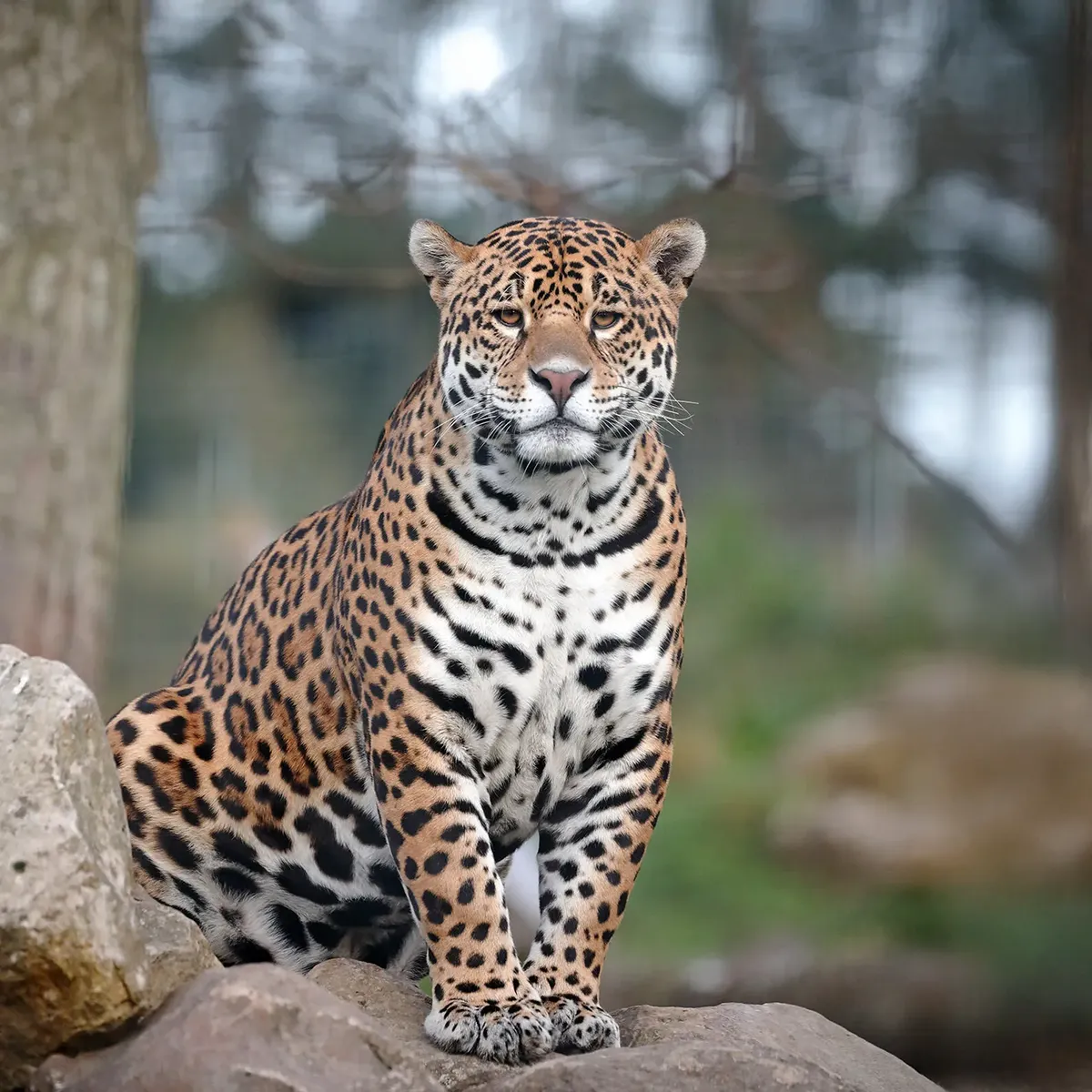
The jaguar is the only American big cat. Gifted with a powerful jaw, its diet includes hard-skinned prey such as caimans and large land tortoises… As with the panther, melanistic forms with predominantly black coats can be found among jaguars… The jaguar has been the subject of a European breeding program since 2000.
Retour au blog Partager : Facebook Twitter
Geoffroy’s cat
Publié par le Friday 15 February 2019

Another of South America’s small felines, found on the southern tip of the subcontinent. Found at high altitudes in the Andes Cordillera, this little feline is perfectly resistant to the cold. It closely resembles its cousin, the southern oncilla, which it sometimes encounters to the north of its range. Geoffroy’s cat has been the subject of a European breeding program since 1996.
Retour au blog Partager : Facebook Twitter
Sumatran tiger
Publié par le Friday 15 February 2019

One of the world’s smallest tiger subspecies, it is also one of the most endangered, with a wild population of less than 400 individuals. With its dark, densely striped coat, this tiger can be observed in two of the world’s largest forest enclosures. The Sumatran tiger has been the subject of a European breeding program since 1990.
Retour au blog Partager : Facebook Twitter
White tiger
Publié par le Friday 15 February 2019

This tiger with its “abnormal” coat still captivates the crowds, even though it does not exist in the wild and is therefore not endangered. First observed in 1950 in the Rewa region of India, the white tiger as it exists in captivity is the result of man’s conservation of a genetic anomaly through inbreeding.
At the park, the white tigers have a vast territory of almost 4 hectares, which you can access via a large walkway with a 360° observatory. But don’t forget to see the other tigers in the park, which belong to highly endangered subspecies…
Retour au blog Partager : Facebook Twitter
African serval cat
Publié par le Friday 15 February 2019

A very active and curious little cat, the serval is characterized by its long legs and large ears. Its hearing is its best weapon, enabling it to spot the movements of its prey in the tall grass…
This species is not managed in captivity, but the park’s scientific team has taken on the task of surveying Europe’s captive population, thus paving the way for possible European management of the species.
Retour au blog Partager : Facebook Twitter
Black panther
Publié par le Friday 15 February 2019

Panther, leopard – there’s no difference, since both names are given to the same feline. Black panthers are the result of a genetic peculiarity observed mainly in forest populations: melanism.
Black panthers can be found in the African forests of the Congo as well as in the tropical jungles of Java…
At the Parc des Félins, all our panthers are allowed to climb trees, and it’s not uncommon to see our black panthers perched almost 20 meters high… Look up!
Retour au blog Partager : Facebook Twitter
Persian leopard
Publié par le Friday 15 February 2019

With its pale ochre coat, the Persian panther is one of the largest leopards in existence. Don’t forget to look up when you see them, as they are regularly perched over 20 meters high…
In 2015, Lumigny Safari Réserve had the privilege of participating in the Persian panther reintroduction program with the transfer of Simbad, a young male born at the park, to Russia… The Persian panther has been the subject of a European breeding program since 1990.
Retour au blog Partager : Facebook Twitter
Atlas lion
Publié par le Friday 15 February 2019

Characterized by its very black mane, which is more voluminous than that of other African lions, the Atlas lion has been totally exterminated by man in the wild. Robust and massive, weighing up to 280 kg, this lion occupied the Atlas mountains of North Africa until the mid-1960s, when the last specimens became extinct.
There are less than 100 individuals in captivity worldwide.
Retour au blog Partager : Facebook Twitter
Katanga lion
Publié par le Friday 15 February 2019

This lion is a lightweight among lions; males weigh just 200 kg. It is also distinguished from other sub-species by its lighter mane. The park is home to a breeding group on a 2-hectare territory. A real treat for observers!
Retour au blog Partager : Facebook Twitter
East-african lion
Publié par le Friday 15 February 2019

East African lions can be found in Kenya and Tanzania and are the most studied and filmed lions in the world… With their light coats and large brown manes, these emblematic lions can be observed on a 4-hectare territory. You can take a long look at them from a footbridge overlooking the territory, with a 360° view. One of the largest and most beautiful lion enclosures in the world!
Retour au blog Partager : Facebook Twitter
White lion
Publié par le Friday 15 February 2019

The white lion is the result of a rare genetic mutation found in the wild, notably in South Africa’s Kruger Park. Paler than other lions, this mythical animal is one of our visitors’ favorite felines.
The park is home to a breeding group on one of its 5 dedicated lion territories.
Retour au blog Partager : Facebook Twitter
Cheetah
Publié par le Friday 15 February 2019

The cheetah is unquestionably the fastest land carnivore, with peak speeds of 110 km/h recorded. Highly endangered in the wild, with fewer than 8,000 individuals, this feline is a model of adaptation to running. It has a slender waist, large nasal cavities, a long tail that acts as a pendulum and, above all, non-retractable claws for better grip on the ground.
The park boasts an exceptional breeding center with 7 enclosures covering a total area of 7.5 hectares. Rare living conditions in captivity. At European level, the cheetah has been managed by a breeding program since 1992.
Retour au blog Partager : Facebook Twitter
African wildcat
Publié par le Friday 15 February 2019
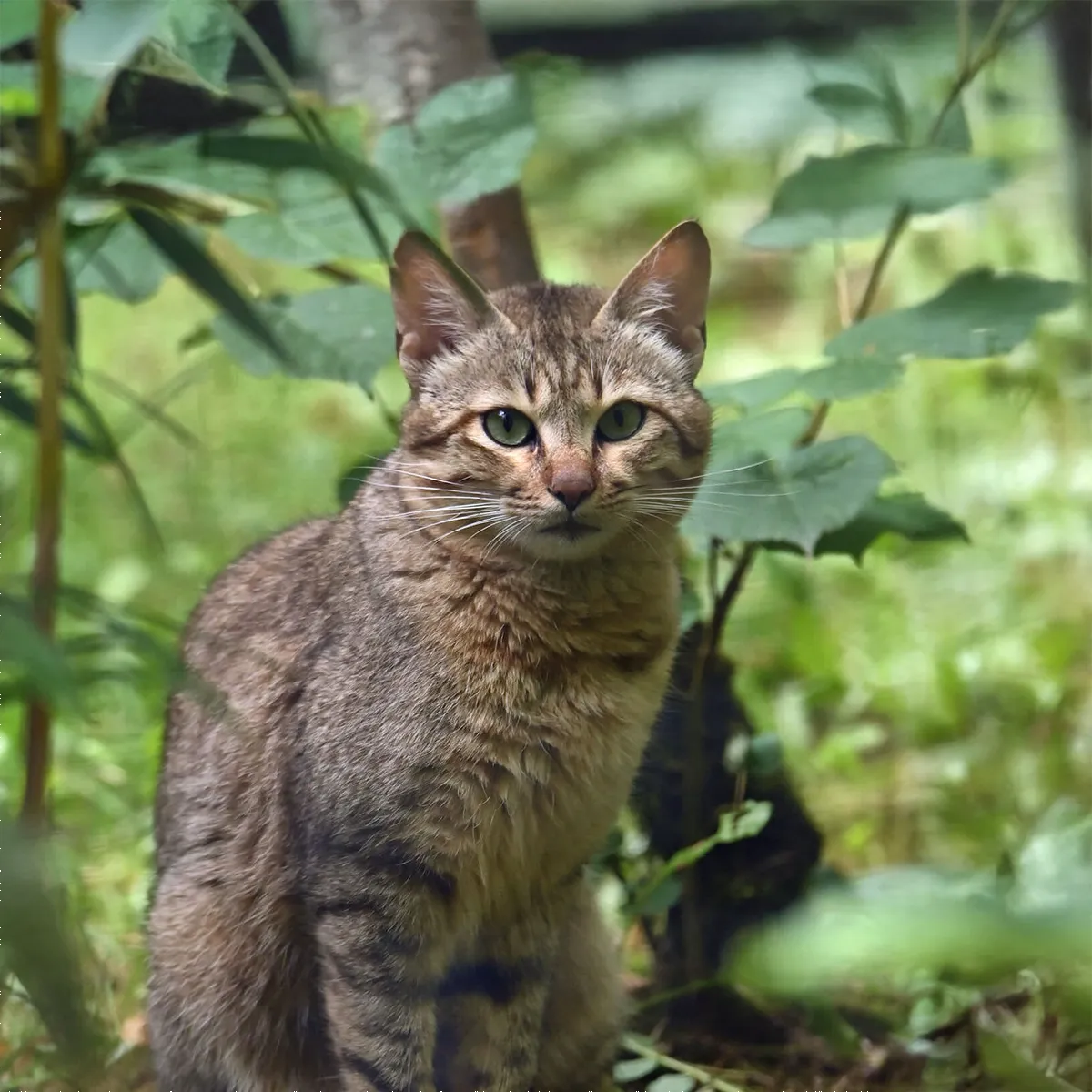
Doesn’t it look just like your cat? That’s normal, because this little feline is probably the origin of cat domestication in the Near East, 3,500 years ago… But make no mistake, this one is truly wild!
It’s difficult to tell the difference between a wild cat and a domestic cat. However, wild cats’ tails are generally very broad, ending in 3 or 4 large black rings. Feral cats also have a black dorsal line.
Retour au blog Partager : Facebook Twitter
Sand cat
Publié par le Friday 15 February 2019

The sand cat is also known as the desert cat. It has a very large head in proportion to the rest of its body. With its large ears, this little feline will simply blow you away! Fully adapted to life in a desert environment, the sand cat is perfectly able to withstand the desert’s extreme temperature variations. Found in the Sahara and the Arabian Peninsula, they are formidable snake predators!
In Europe, the sand cat has been part of a breeding program since 1998. This program has been managed by our park since 2012.
Retour au blog Partager : Facebook Twitter
Caracal
Publié par le Friday 15 February 2019
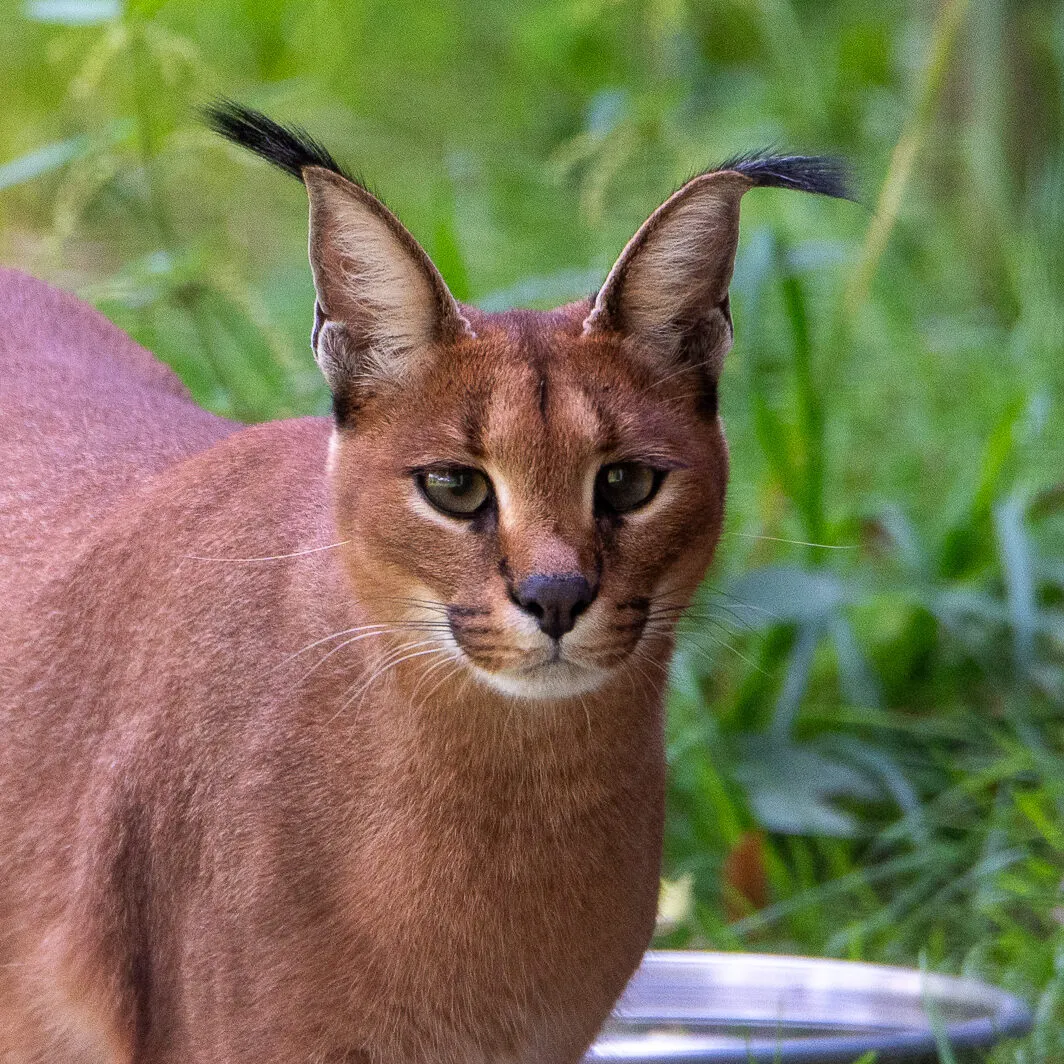
The caracal bears a striking resemblance to the lynx, with black tufts at the tip of its ears. However, this feline is not a lynx. This small feline is found in Africa and the Middle East, and is not yet considered threatened. This status could change in the future, as the caracal is heavily hunted by farmers and landowners in Africa.
The caracal is a formidable bird hunter, capable of leaping two meters without a run-up… It also takes advantage of its plain coat to easily camouflage itself in tall grass.
In captivity, the species is monitored by an international studbook.
Retour au blog Partager : Facebook Twitter
